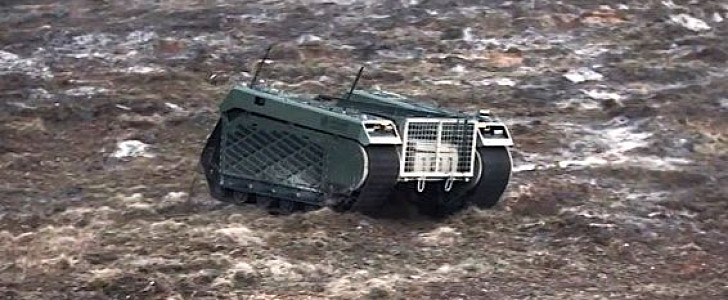Advanced as we believe ourselves to be when it comes to the rovers we send to alien worlds, these machines are still highly dependent on the instructions received from Earth. Sure, autonomous capabilities are included in the Perseverance rover, for instance, but they are limited.
If we are to truly begin to understand the planets in our solar system better, we really have to give these machines the means they need to go about their business alone. That shouldn’t be that hard, considering how advanced Earth-based autonomous systems already are.
Believe it or not, it’s not NASA planning to get down to business in this field seriously, but its European counterpart, ESA. Last week, the agency signed a deal with Estonian robotics company Milrem to have it look at autonomous capabilities for planetary rovers.
The contract is one in stages, and for starters, aims to have Milrem come up with an overview of the current state of autonomous systems and devise the tools needed to increase the autonomy of the rovers.
The ultimate goal is to make these exploration tools capable of making their own decisions based on observation data and points of interest (POI). Adding or removing such POIs on their own is also something ESA wants from its future rovers.
The agency plans to use Moon rovers to mature whatever technology Milrem and others will develop and plans to land a more autonomous one on Mars in the next two decades. Near-Earth asteroids are also prime targets for upcoming missions.
One of the missions to test autonomous systems is the European Large Logistic Lander (EL3), planned for later this decade.
It includes a rover meant to gather samples that are to be shipped back to Earth in a human-controlled manner, but after this mission is accomplished, the plan is to have it roam the lunar surface partly alone, for ranges that can go as high as 300 km (186 miles). We said partly because the rover will continue to receive orders from Earth when needed.
Believe it or not, it’s not NASA planning to get down to business in this field seriously, but its European counterpart, ESA. Last week, the agency signed a deal with Estonian robotics company Milrem to have it look at autonomous capabilities for planetary rovers.
The contract is one in stages, and for starters, aims to have Milrem come up with an overview of the current state of autonomous systems and devise the tools needed to increase the autonomy of the rovers.
The ultimate goal is to make these exploration tools capable of making their own decisions based on observation data and points of interest (POI). Adding or removing such POIs on their own is also something ESA wants from its future rovers.
The agency plans to use Moon rovers to mature whatever technology Milrem and others will develop and plans to land a more autonomous one on Mars in the next two decades. Near-Earth asteroids are also prime targets for upcoming missions.
One of the missions to test autonomous systems is the European Large Logistic Lander (EL3), planned for later this decade.
It includes a rover meant to gather samples that are to be shipped back to Earth in a human-controlled manner, but after this mission is accomplished, the plan is to have it roam the lunar surface partly alone, for ranges that can go as high as 300 km (186 miles). We said partly because the rover will continue to receive orders from Earth when needed.

